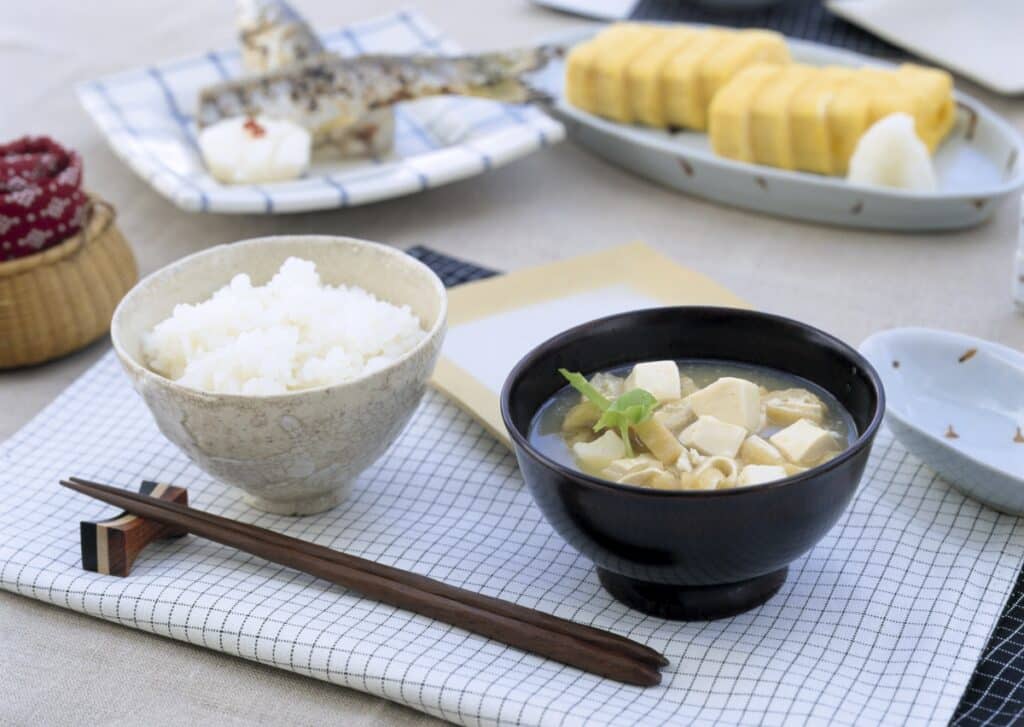
We can enjoy miso beyond that tasty bowl of soup that you have before snacking on sushi. This food is basic in Asian food and we can use it in various ways.
All-purpose miso can add a boost of umami flavor to your favorite foods, from pasta to dessert. Although it is still unknown to many, people who are familiar with it have probably consumed it in the form of Japanese miso soup.
What is it?
This fermented soybean paste contains a large amount of probiotics. Aspergillus oryzae it's the particular strain of probiotic found in this food that works symbiotically with our gut bacteria. That is, it helps grow our 'good' strains even more while eliminating the 'bad' bacteria.
The fermentation process, which involves the combination of koji (a fungus), soy and salt, is what encourages these beneficial bacteria that can improve gut health.
You just have to keep in mind that miso is a food with high sodium, so when using it in a recipe, you shouldn't add salt or other potentially salty foods.
One thing you should keep in mind is that when buying it you have to check the nutritional label to avoid the preservatives. The goal should be to look for products that don't include much more than water, organic soy, rice, salt, and koji. Some varieties may also contain algae or barley.
Properties
Miso contains a fair amount of beneficial vitamins, minerals, and plant compounds. In 28 grams it generally provides:
- Energy: 56 calories
- Carbohydrates: 7 grams
- Fat: 2 grams
- Protein: 3 grams
- Sodium: 43% of the recommended daily allowance
- Manganese: 12% of the recommended daily allowance
- Vitamin K: 10% of the recommended daily allowance
- Copper: 6% of the recommended daily allowance
- Zinc: 5% of the recommended daily allowance
It also contains smaller amounts of B vitamins, calcium, iron, magnesium, selenium, and phosphorus, and is a source of choline. Interestingly, varieties made from soybeans are considered complete protein sources because they contain all the necessary essential amino acids for human health.
Additionally, the fermentation process used to produce miso makes it easier for the body to absorb the nutrients it contains. The fermentation process also promotes the growth of probiotics, beneficial bacteria that provide a wide range of health benefits.
However, miso is also very salty. Therefore, if we are controlling our salt intake, we may want to consult a doctor before adding large amounts to the diet.

Services
Miso is a versatile and nutrient-rich seasoning. The fermentation process used to produce it can be especially beneficial, potentially boosting digestion, aiding the immune system, and helping fight disease.
Improves digestion
Having the right type of bacteria in the gut helps maintain a healthy gut flora. Having a healthy intestinal flora is very important because it helps defend the body against harmful bacteria and toxins. It also improves digestion and reduces gas, constipation, and antibiotic-related diarrhea or bloating.
A. oryzae is the main probiotic strain found in miso. Science shows that the probiotics in this seasoning can help reduce symptoms related to digestive problems, including inflammatory bowel disease. In addition, the fermentation process also helps improve digestion by reduce the amount of antinutrients in soybeans.
Antinutrients are compounds found naturally in foods, including soybeans and the grains used to make miso. If we take antinutrients, they can bind to nutrients in the intestine, reducing the body's ability to absorb them.
Reduces the risk of cancer
Miso may offer protection against certain types of cancer. The first may be cancer. stomach. Observational studies have repeatedly found a link between high-salt diets and stomach cancer. However, despite its high salt content, miso does not appear to increase the risk of stomach cancer like other high-salt foods do.
Experts believe this may be due to the beneficial compounds found in soybeans, which potentially counteract the cancer-causing effects of salt.
Animal studies also report that eating miso may reduce the risk of breast cancer. lung, colon, stomach y mom This seems especially true for varieties that are fermented for 180 days or more. Miso fermentation can last anywhere from a few weeks to three years. Generally speaking, longer fermentation times produce a darker, stronger-tasting miso.
In humans, studies report that regular consumption of miso may reduce the risk of breast cancer. liver and breast in 50-54%.
Strengthens the immune system
Miso contains nutrients that can help the immune system function optimally. For example, the probiotics in miso can help strengthen intestinal flora, which in turn boosts immunity and reduces the growth of harmful bacteria.
Also, a diet rich in probiotics can help reduce the risk of getting sick and help you recover faster from infections, such as the common cold. Additionally, regular consumption of probiotic-rich foods like miso can reduce the need for antibiotics to fight infections by up to 33%.

Possible risks
Miso consumption is generally safe for most people. However, it contains a large amount of salt. Therefore, it may not be a good option for people who need to limit their salt intake due to a medical condition.
Also, most varieties are made from soybeans, which could be considered goitrogenic The goitrogens are compounds that can interfere with the normal functioning of the thyroid gland, especially in those who already have poor thyroid function.
That being said, when foods containing goitrogen are cooked and eaten in moderation, they are likely to be safe for everyone, including those with thyroid problems.
How to use miso in recipes?
When we buy miso to cook at home, we must take into account the colors. That is, darker colors are generally related to a stronger and saltier taste. Miso is extremely versatile and can be used in a number of ways. For example, you can use it to flavor a broth, marinade, or stew.
make marinade
Miso can be a simple and delicious marinade for fish or chicken. We just have to mix it with rice vinegar and a pinch of brown sugar, bring it to a simmer and let it cool before using it.
While not one of the healthiest versions to cook, it can add variety and new flavors to your meal.
Stir as a salad dressing
Just a tablespoon can spice up any homemade salad dressing. Soybean paste goes especially well with ginger, lime and sesame or olive oil.
If you prefer a hint of sweetness to balance the umami notes, you can add a drop of agave syrup or honey.
sandwich dressing
Any snack can be made better by a single tablespoon of miso, which is a fun replacement for regular seasonings. You will only have to spread it on your sandwich as you would with mayonnaise, hummus or guacamole.
Mix with baked goods
As we said before, this food has a salty aftertaste that can give sweets a more complex and palatable flavor.
For a flavorful touch, it's normal to add 2 tablespoons of peanut butter or chocolate chip cookies. But adding miso to your dough also increases the nutritional profile of your baked goods thanks to the probiotic contribution.
mix it with pasta
Miso is the perfect pairing for pasta, creating richer, deeper, fuller-bodied flavors in the sauce. Just add two tablespoons of white miso to your favorite pasta sauce and simmer for five to 10 minutes before serving.